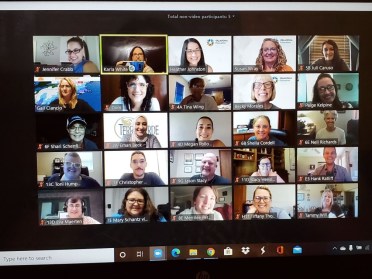Teachers in 10 states are piloting a program to teach science concepts in a way that motivates learning and interaction, while minimizing the costs to school districts.
OpenSciEd was launched two years ago to ensure any science teacher, anywhere, can access and download free, high quality and locally adaptable full-course materials. Since then, hundreds of teachers have tested the units in classrooms.

Grants from Williams allowed teachers in Oklahoma, Louisiana and Washington to come together over the summer and explore ways to continue the momentum even as many students and districts are starting school with remote learning. Expansion of the program also is planned in New Jersey.
“In March when the schools closed, the OpenSciEd group kicked into action with mechanisms to support teachers piloting units remotely. They did some of the most miraculous things to make remote learning powerful,” said Tiffany Neill, Deputy Superintendent of Curriculum and Instruction for the Oklahoma Department of Education.
Because of Williams support, over the summer 130 new teachers to the program were able to participate in training as well, Neill said.
Neill said the program has been transformational because it encourages curiosity and engagement of students.
“In this curriculum, nobody in the class is not participating,” she said. “It’s extremely powerful to see. Everybody’s ideas matter.”
While starting at the middle school level, the goal is to create an entire science curriculum from elementary to high school.
“I think science has become boring through textbooks and OpenSciEd brings it to life again,” said Paige Kelpine, a teacher at Carl Albert Middle School in Oklahoma City.
Marcia Garrett teaches 6th grade science in Sequim, Washington.
The unit she’s planning to pilot this year – Natural Hazards — can easily be modified for remote learning. Using research-based online resources, students will explore the science behind tsunamis, which are a real hazard in the Pacific Northwest.
Garrett said OpenSciEd has led to some magical years of teaching.
“The fascinating thing is the level of intellectual engagement that the kids invest in,” she said. “Those kids who may have not been willing to speak up will start to speak up. They all end up having something to share and the confidence to do science.” Watch this video by the Oklahoma Department of Education to see how the program has transformed classrooms. It was filmed before schools closed because of COVID-19.
